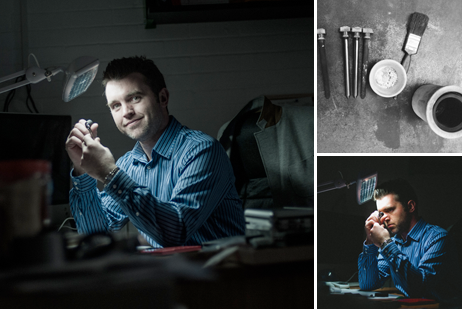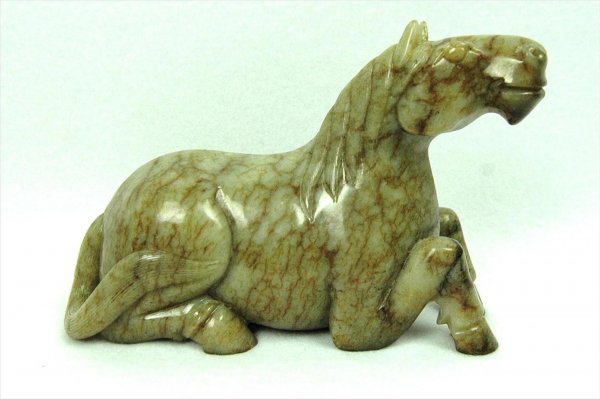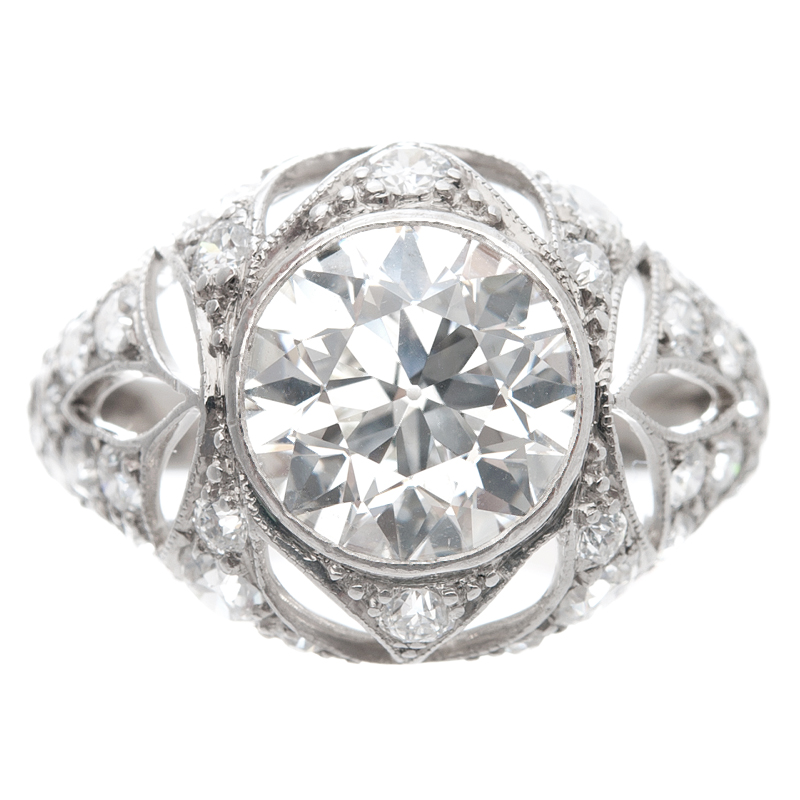This natural stone is a popular gemstone especially for engagement rings and earrings. Before you buy diamonds, you should understand the four standard measurements: cut, carat, colour and clarity. These measurements are used to compare and grade diamonds and will help you decide what type to buy based on your budget and style preferences.
Firstly, and most importantly, choose a diamond because you absolutely love it and not as a statistical exercise. Often in the shop, customers who first come in have become so boggled by the four C’s and making comparisons, that they have forgotten they’re buying the most significant (and probably most costly) item of jewellery they’ll ever purchase. Every diamond on earth is unique, however as with everything else in life, there’s a whole spectrum of quality and value out there, so it’s important to be familiar with the ‘four C’s’.
Cut, Colour, Clarity and Carat are all equally important factors when when purchasing loose diamonds and each variable can affect the price you will pay for the diamond. So, some homework required -but not a degree!
CUT
The cut refers to the shape of the diamond, based on the angles and proportions that allow light to reflect from one facet to another. Diamond shapes are many and varied, ranging from round cuts and hearts to pear and oval. The traditional shape is round brilliant with 58 facets as its symmetry allows it to reflect more light, making it the most brilliant of all the shapes. The famous Tiffany diamond was given 90 facets, 32 more than the traditional round brilliant cut, giving the Tiffany diamond intense colour and brilliance. Other popular shapes are marquise, emerald and princess.
Diamonds are known for their brilliance and a well-cut diamond should maximise this effect, whether it’s solitaire (a jewel set by itself) or in a gold or platinum setting. The cut of a diamond consists of three factors: grade, depth and polish.
- Grade – A standard grading report describes the cut of a diamond, based on the shape or outline and the pattern made by the facet arrangement (also known as the cutting style).
- Depth – This refers to how deep the stone has been cut. If a stone has been cut too shallow or too deep, the diamond will lose light through the bottom or sides, which will cause the stone to sparkle less.
- Polish – The polish determines the stone’s brilliance. A poor polish or rough facets will reduce the diamond’s brilliance and its value.
Many of our customers are often quick to get up to speed on the Colour and Clarity as the driving force behind their choice of diamond, however for me, the most important aspect of any diamond has to be the cut. The cut of your diamond is the only element that is not determined by nature, but by man, during the process of cutting and polishing the stone. At the most basic level, we all want a diamond to sparkle, and this is where a very good or excellent cut comes into play. Too deep or too shallow and the light won’t reflect as well, making all the other characteristics, such as clarity, obsolete. So make sure you pay attention to the cut of your diamond. Whilst I’d advise an open mind on clarity, the cut is one aspect of your purchase where there should be little or no compromise. As with all of the four C’s, the details will be available on the diamond certificate, so just ask to see it and pay attention to the polish and symmetry.
CARAT
1 carat = 100 points = 200 milligrams (one fifth of a gram)
The cut and setting can often make a diamond look bigger than its carat weight so examine all 4 standard measurements before buying. Large diamonds are quite rare and naturally, prices increase significantly with the carat weight. If you want a high carat diamond, often the case when buying an engagement ring, consider a slight downgrade in size.
The size of your diamond (if it’s cut well), will depend on the carat weight. We divide a carat into 100 smaller units of measurement, called points, as the average customer may be buying a fraction of a carat, such as 50 points (0.50ct), being half a carat. By nature, quite a lot of ladies gravitate towards some of the larger stones we have in our counters, as certainly they can be pretty impressive, but don’t forget size isn’t everything!
The final consideration that I personally think is often overlooked, is the Diamond Certificate. All of the above points should be explained to you by the jeweller, and verified by an independent laboratory report. Well respected labs include the GIA, HRD, IGI and EGL, and certainly with any item of value,your insurer will certainly prefer a certificate for your purchase. Be wary of any salesperson pushing an ‘in-house’ certificate, as often this has not been undertaken by a qualified diamond grader, so is worthless and frankly annoying.
Last but not least, a couple of tips to ease your expedition.
– If the price of a loose diamond seems too good to be true, it probably is.
– If you are shopping for a diamond together, talk budgets before you leave the house! Nothing makes for a more uncomfortable experience than either a domestic, or a man with a financial meltdown.
– Consider as many different shapes and styles as you can. Don’t be intimidated by pushy sales people, or feel you have to buy something on the spot. In our store, we will always have a loose diamond to fit with your hopes and dreams, and any item of jewellery can be made up to order.
– If you are brave person to choose a diamond as a surprise, then keep it simple. Do your big thinking in advance, what is his/ her fashion style, build and even job? Which ring is going to fit into their lifestyle?
– Go for timeless – it might be fashionable now -but will you still love it in 20 years…?
– Scary as it is – think ahead. Will the design you like work when it comes to wedding bands? Talk to the jeweller, and make sure if it’s unusual, that there’s an unusual wedding band to match!
COLOUR
All diamonds possess trace amounts of yellow or brown – the most valuable diamonds tend to be the colourless diamonds. However, very deeply coloured diamonds, such as a brilliant canary yellow diamond, can actually cost more than a colourless stone. These ‘fancy diamonds’ (also called Z+ diamonds) are even rarer than their colourless counterparts, and can also be found in blue, green, black, red and pink. The most famous fancy diamond is the deep yellow Tiffany diamond. Another famous gem is the Millennium diamond, the world’s largest ‘D colour’ diamond for its virtual flawlessness.
The chart below explains the grading of diamond colours from D to Z. Colourless diamonds are graded D and are very rare. The colour of a diamond can affect the setting in engagement rings. White colours are often set in white gold or platinum while the warmer tones are often set yellow gold.
Ironically the most rare and valuable colours D, E and F, are in fact deemed ‘colourless’. When I’m grading loose diamonds, the colour at the top end of the spectrum is always the most tricky and when showing loose diamonds to customers, I often differentiate them for comparison by asking, which looks ‘brightest?’. Unless specific colours are requested, in store, we stock colours from D-H (D being the top banana). If you have budget in mind, and want my advice, then colour is the more visible aspect of the diamond than clarity, as it’s an area where you really can see a difference, so try and stay somewhere at the top of the table if you can!
CLARITY
The majority of diamonds have inclusions (small mineral traces or flaws), which are often undetectable to the naked eye and devalue the stone. The number of inclusions, their size and where they are located on the diamond can also affect the flow of light through a diamond, which reduces the brilliance. Flawless diamonds are uncommon and therefore very expensive. However, many inclusions can be concealed by a setting, which is frequently used for diamond rings.
eBay sellers often describe the clarity of larger, solitaire diamonds by referring to the industry letter grading scale. Diamonds with inclusions visible to the naked eye have a grading of I1 – I3. Small inclusions have a grading of SI1 – SI2 while diamonds with very small inclusions have a grading of VS1 – VS2. Diamonds with even tinier inclusions are graded VVS1 – VVS2 while rare diamonds with no inclusions are either known as flawless (FL) or internally flawless (IF). The International Gemological Institute (IGI) uses the grading scale below for clarity.
Here’s where my opinion might be a bit provocative, as honestly, I think people can get overly hung up about the clarity of a diamond. Now, i’m not suggesting that everyone is wasting their money by wanting internally flawless diamonds, as who wouldn’t want perfection, but it comes at a price, so be prepared for that. We always encourage customers to have a look at their diamond through the jeweller’s loupe, as it can be really interesting to see where the naturally occurring inclusions are and also allow you to make decisions based on the merits of an individual diamond, not the stats alone.
Of course, we don’t advocate that you lump for anything that has black marks ( I1-3 – imperfect), as that’s just a nasty stone, but there’s a lot to be said for a good SI1, (some slight inclusions, but nothing visible to the naked eye). Obviously, if budget dictates, then naturally a clearer diamond will give you the best sparkle, so if you can, then yes go for a VS1/2 (very slight inclusions) or perhaps higher, but all i’m saying is – think about the variables and what is important to you.
The only caveat to my above advice comes when buying a less faceted shape, such as an Emerald Cut. Here you have a clearer cut of diamond, where inclusions stand a chance of really standing out, so don’t be afraid to be picky, as a good jeweller will take you through all of this point by point.
CERTIFICATION
Many eBay diamond sellers offer certificated listings that include diamond appraisal (estimated retail value) and certification value in their listings. Certification, (official documents issued by third-party gemological labs) states the details about each gem (as a minimum, a grading report of the 4 Cs – cut, carat, colour and clarity) and is independent of market value. The certification can also include:
- Certification confirming the diamond’s quality
- Proof that a diamond is organic (natural)
- Serial number on the girdle of laser-inscribed diamonds (for certification and identification purposes)
Before you buy a diamond on eBay:
Ensure that the grading certificate has been issued by a reputable gemologist or gemological lab. It can be difficult to determine impartiality and stringency of unknown labs.
Look for listings which offer a picture of the grading certificate and the serial number. Some labs offer online checking whereby you can type in the serial number and validate the lab that certificated the diamond as well as the specs.
Ask the seller how they confirmed the origin of the diamond so you can avoid buying a conflict diamond – gems sold to fund wars and purchase weapons. Some eBay sellers use the term ‘Kimberley Process confirmed’ – the Kimberley Process aims to certify international diamonds in order to stop this trade.
OTHER DIAMONDS AND CRYSTALS
There are many manufactured diamonds on the market which include pink, blue and black diamonds and even colourless diamonds which have been clarity-enhanced. These are some of the enhanced stones you may come across:
- Clarity enhanced
- Colour enhanced
- Laser-drilled
- High Pressure High Temperature (HPHT)
- Chemical Vapour Deposition (CVD)
- Also available are a range of diamond look-alikes:
- Cubic Zirconia
- Moissanite
- Simulated Gemstones
MAINTENANCE
Diamonds might be the hardest naturally-occurring substance on Earth, but they need to be looked after. Diamonds, loose or otherwise, should be stored individually in soft cloth pouches to prevent the stones from hitting each other and chipping. Certain settings also offer better protection: four-prong setting, six-prong setting and low-profile channel (also known as bezel settings).
Regular Cleaning
Diamonds are renowned for their brilliance, but dust, oil from your skin and other unclean substances can reduce the stone’s sparkle. To protect your diamond ring, engagement ring and earrings, follow the tips below and remember, if the diamond is in a metal setting, treat it gently as gold can scratch.
- Clean your diamonds every now and then in soap and water. Let the jewel air-dry then polish with a soft cloth.
- Using a worn, soft-bristle toothbrush, occasionally brush the diamond to remove dirt from between the crevices.
- For more resistant blemishes, use a soft brush with a weak solution of one part ammonia and four parts water.
Professional Maintenance
Jewellers can also clean diamonds and gems for you, using steam or ultrasound. However, ultrasound can aggravate internal fissures or flaws so make sure the diamond’s existing clarity isn’t affected. You should also ask the jeweller to ensure the diamonds are secure in their settings to prevent the stones from falling out.
Credit: Mitch Bicknell
Mitchel has worked in the Jewellery trade for most of his career, starting out G.L.Bicknell and Sons, on Vyse Street. First established in 1979, it was here at the family shop that Mitchel learnt about the manufacturing process, growing up in the workshops and watching his father work at the board setting diamonds and gems. Over the years Mitchel has worked the shop floor, helping customers choose beautiful jewellery and advising on bespoke items or large stones. He later went on to study at the Diamond High Council, Antwerp for his Diamond Grading Diploma, giving him a highly skilled technical background in Diamonds.


















